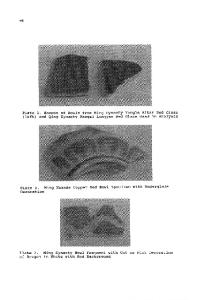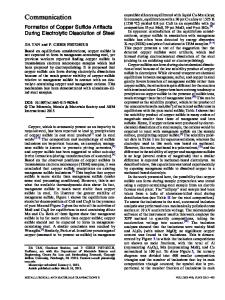Experimental and Kinetic Modeling Investigation of Copper Dissolution Process from an Iranian Mixed Oxide/Sulfide Copper
- PDF / 5,664,255 Bytes
- 14 Pages / 595.276 x 790.866 pts Page_size
- 2 Downloads / 359 Views
RESEARCH ARTICLE
Experimental and Kinetic Modeling Investigation of Copper Dissolution Process from an Iranian Mixed Oxide/Sulfide Copper Ore Isa Nozari1 · Asghar Azizi1 Received: 5 July 2020 / Accepted: 21 August 2020 © The Minerals, Metals & Materials Society 2020
Abstract In the present work, the leaching behavior of copper from an oxide/sulfide ore was assessed in two work phases including process optimization and kinetics modeling. In the first phase, the individual and synergistic impacts of the influential parameters such as sulfuric acid concentration, liquid/solid ratio, pulp mixing rate, temperature, and contact time were investigated on the dissolution rate of copper using response surface modeling. The findings demonstrated that the linear effects of dissolution time and temperature and the quadratic impact of acid concentration had the largest influence on the recovery and the linear impact of stirring speed had the least degree of importance. Process optimization was also performed utilizing the desirability function approach and more than 88.17% copper was recovered at the optimum conditions: ~ 17% acid concentration, ~ 11.3 mL/g liquid/solid ratio, ~ 390 rpm stirring speed, 50 °C temperature, and 60 min leaching time. In the second phase, the leaching kinetics was examined by heterogeneous shrinking core models and it was realized that diffusion through product layer was the dissolution rate controlling step with the activation energy of 28.92 kJ/mol and frequency factor of 6.155 min−1. Ultimately, a mathematical kinetics model was developed and suggested to understand the leaching process.
The contributing editor for this article was T. Hirato. * Asghar Azizi [email protected]; [email protected] 1
Faculty of Mining, Petroleum and Geophysics, Shahrood University of Technology, Shahrood, Iran
13
Vol.:(0123456789)
Journal of Sustainable Metallurgy
Graphical Abstract a 3D response surface graphs displaying the synergistic effects between “temperature and liquid/solid ratio” and “stirring speed and leaching time” on the leaching recovery of copper; b the optimum conditions of influential factors; c plot of diffusion through product layer versus leaching time for temperature effect.
Keywords Leaching kinetics · Copper recovery · Optimization · Modeling · Shrinking core
Introduction Copper is one of the most significant and applicable metals in industry owing this to its numerous useful properties such as high thermal and electrical conductivity. In addition, this element is widely distributed in nature and is formed as an alloy with various elements [1, 2]. In nature, copper ores exist mainly as sulfide (chalcopyrite, chalcocite, bornite) and oxide minerals (malachite, azurite, chrysocolla) [3]. Nowadays, the increasing demand has resulted in the depletion of high-grade and primary global resources and subsequently the recovery of copper from secondary resources, wastes, and low-grade ores has attracted much attention [4–10]. For instance, Han et al. [8] utilized the high-
Data Loading...











